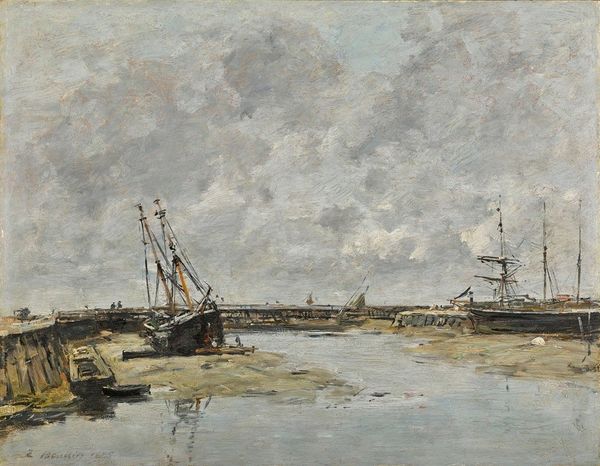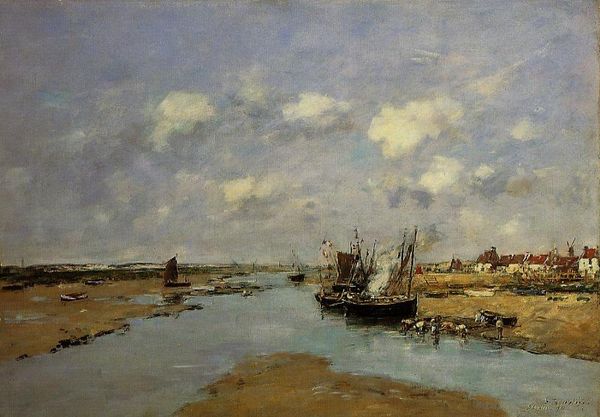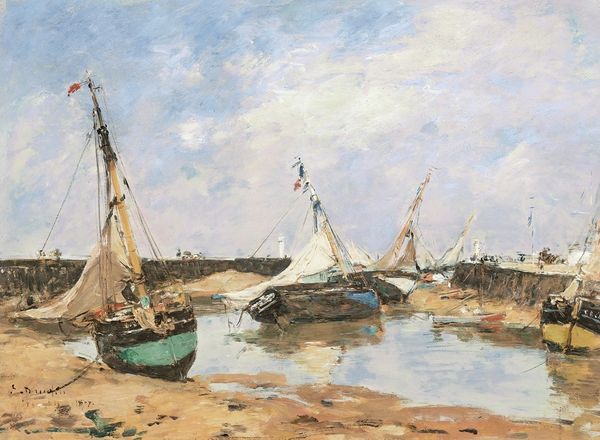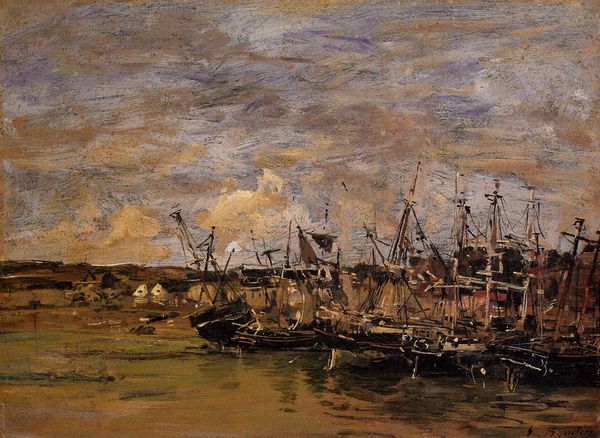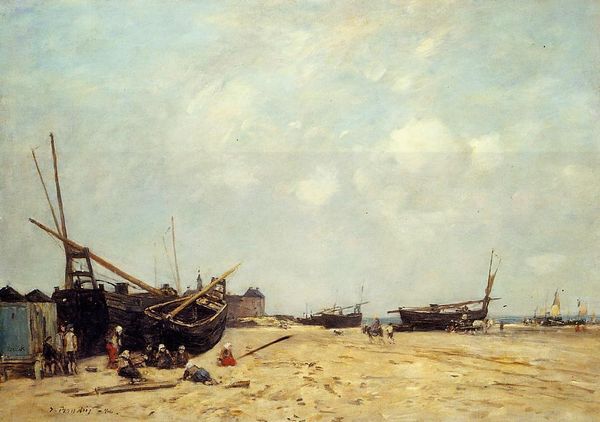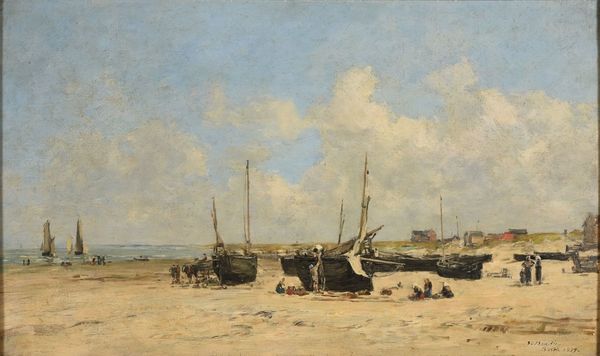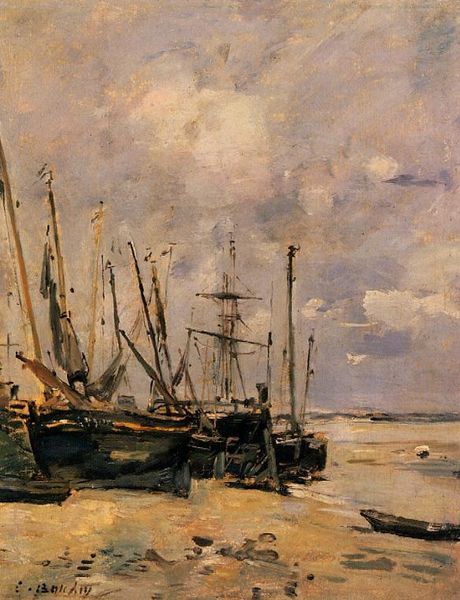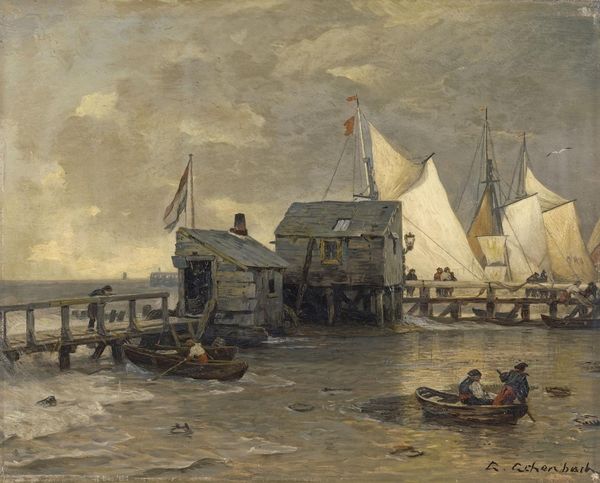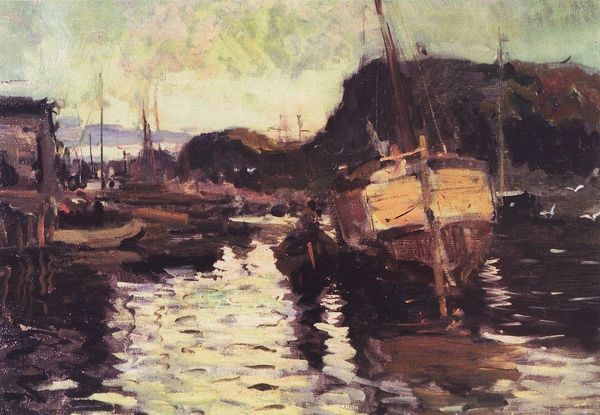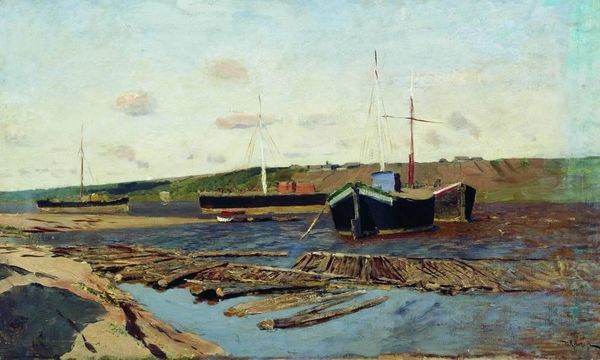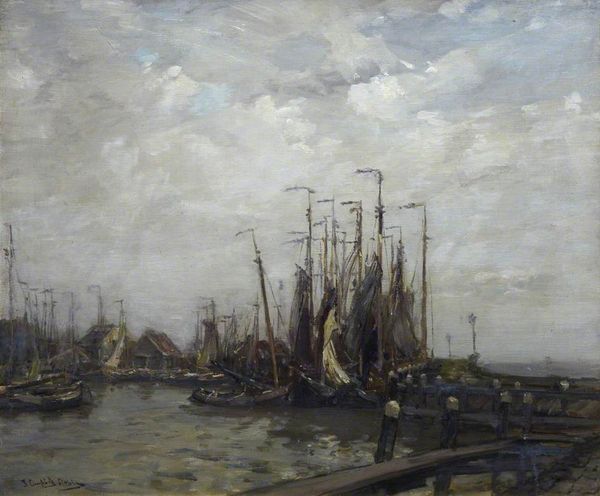
painting, plein-air, oil-paint
#
boat
#
ship
#
painting
#
impressionism
#
impressionist painting style
#
plein-air
#
oil-paint
#
vehicle
#
landscape
#
impressionist landscape
#
oil painting
#
water
#
cityscape
Copyright: Public domain
Curator: Before us is Charles François Daubigny's "Fishing Port," painted in 1874. The scene depicts a somewhat subdued coastal view. Editor: It's moody, isn't it? The light is diffused, and the color palette is quite restrained, almost monochromatic. I'm immediately drawn to the textural qualities—the roughness of the brushstrokes really convey a sense of the maritime environment. Curator: Absolutely. The composition employs a deliberate structure. Notice how the masts of the boats punctuate the skyline, creating a rhythmic series of vertical lines, offset by the horizontal emphasis on the land. Daubigny manipulates visual planes in terms of recession, where color and tone create an asymmetric yet stable dynamism, pushing vision and movement through the painting in order to create perspective. Editor: But let's think about that 'maritime environment.' What are the material realities implied here? These boats represent labor, trade, lives lived at sea, which must involve hardship. Even the ochre foreground alludes to labor--the ground suggests a gritty, working waterfront where you imagine sailors milling about. Daubigny, working 'en plein air', confronts a way of life built from labor in relation to a natural environment. Curator: You're right to observe Daubigny's rendering of reality. But don't lose sight of how art manipulates. The diffused lighting and subtle color gradations serve an aesthetic purpose--they are about pictorial harmony and effect. Editor: Harmony comes at a cost here! Someone assembled those vessels piece by piece and someone, perhaps even people, lost their life to the sea in their working days. I'm curious what these vessels would be ferrying...Daubigny highlights labor with an economy of detail but not in a fashion devoid of attention to what they yield as consumable entities. Curator: A fascinating read. The visual dialogue created through form and composition holds deeper cultural relevance than I first realized. Thank you for expanding our awareness of material factors here. Editor: And thank you for orienting us around the forms and pictorial effects.
Comments
No comments
Be the first to comment and join the conversation on the ultimate creative platform.
